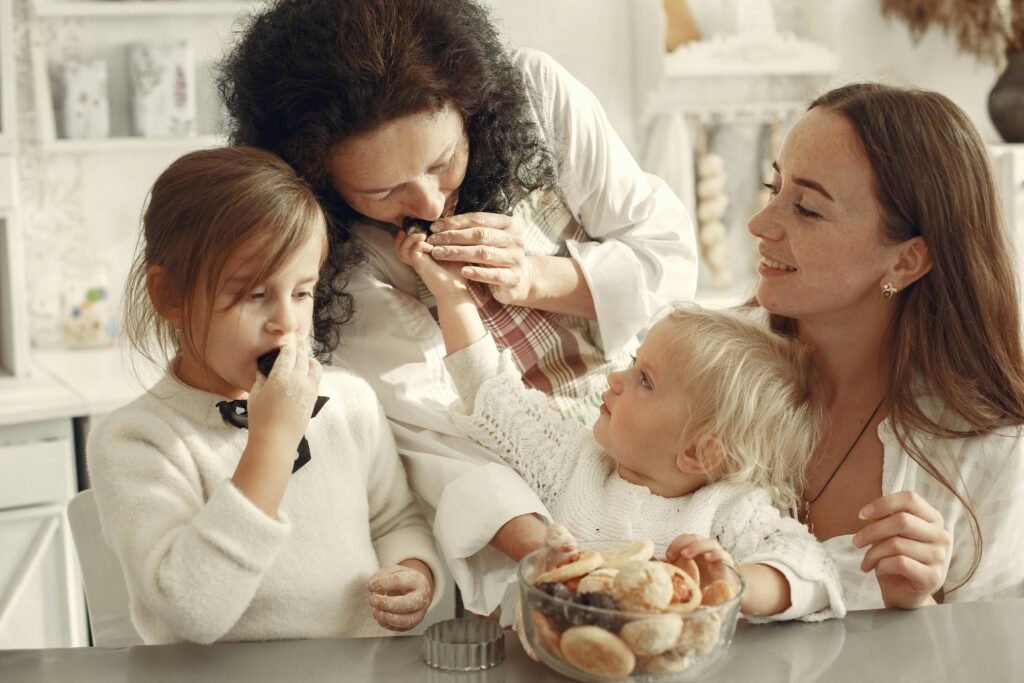Successful multigenerational households – consisting of three or more generations under the same roof – prioritize open communication, feature a mix of common and private spaces, and participate in regular bonding activities. Indeed, multigenerational living is increasingly popular in the United States, with these households now representing 18% of the population.
Multigenerational homes help young families save money on housing and childcare costs, while also allowing them to better care for aging parents. However, establishing a successful multigenerational home isn’t always easy; it requires setting key ground rules and cooperation from all family members.
Table of Contents
Prioritize Open Communication
Open communication is essential for setting and maintaining healthy boundaries within multigenerational families. Keep in mind, even if you initially put up with intrusions and a lack of respect or privacy, resentment and tension then builds over time, resulting in conflict that could have been easily prevented.
By ensuring the whole family knows to communicate their feelings, expectations, and preferences in an open and respectful way, you can better discuss pressing issues before they become a source of tension. So, take time to set realistic expectations for the family.
A list of reasonable house rules is a key way to ensure everyone’s needs and preferences are respected. For instance, you may want everyone to set aside distractions like their phones and television, and eat dinner together each night. Or, you may want everyone to clean up after themselves (meaning: no leaving trash around the house or dirty dishes on the table or sink overnight, for example).
It can also be a good idea to set household quiet hours that respect everyone’s rest and sleep schedules. If anyone has a problem, it should be discussed as soon as possible. Regular family meetings are a great way to ensure problems are aired peacefully, and solutions that work for everyone then implemented without delay.
Remember: maintaining a healthy, open dialogue is key to preventing hard feelings and disappointment.
Plan Intergenerational Activities
Regular bonding activities are also essential for ensuring a thriving multigenerational household. Fortunately, research has shown that physical proximity to children is the strongest predictor of a close relationship between grandparents and grandchildren”, so a multigenerational household naturally leads to stronger, healthier relationships.
And, there’s also no shortage of options when it comes to activities that help grandparents and youngsters get to know each other better. For instance, you may want to work on a family garden together. Gardening is practical, rewarding, and great for physical and mental health.
Alternatively, cooking meals together is also a fun family bonding opportunity. Grandparents can pass down favorite family recipes to adult children and grandchildren, and together you can create a new family tradition.
Family game nights are always popular. Board games, for example, are an opportunity to make happy memories, strengthen emotional bonds, and even improve family communication skills.
Create a Mix of Common and Private Spaces
Shared common rooms are essential for facilitating socialization and fostering community, while private spaces also ensure everyone can enjoy alone time when needed. This is a key factor in successful multigenerational living.
So, for instance, a dedicated family room with comfy seating and a large-screen television is the perfect place for the family to gather and watch movies. Or, an outdoor patio can be used to share meals in the warmer months.
Ideally, you should create a number of living areas, so there’s always other options if anyone’s needing privacy when the main living spaces are occupied.
This needn’t be expensive either. Simply place some comfortable seating in the guest bedroom, for instance, and you’ll instantly have an extra living space. Keep in mind, if you or a family member works from home, a private office is also essential. A foldaway desk can be useful if you’re short on space, while you can even soundproof the room for extra peace and quiet.
Multigenerational Living: In Conclusion
Intergenerational households allow families to save on living expenses, and more easily fulfill caregiving responsibilities concerning both children and aging parents.
By prioritizing open communication, planning fun bonding activities and creating a mix of common and private spaces, you’ll be sure to create a peaceful, happy and thriving intergenerational household.
Article by Jennifer Alli
Images from Pexels



